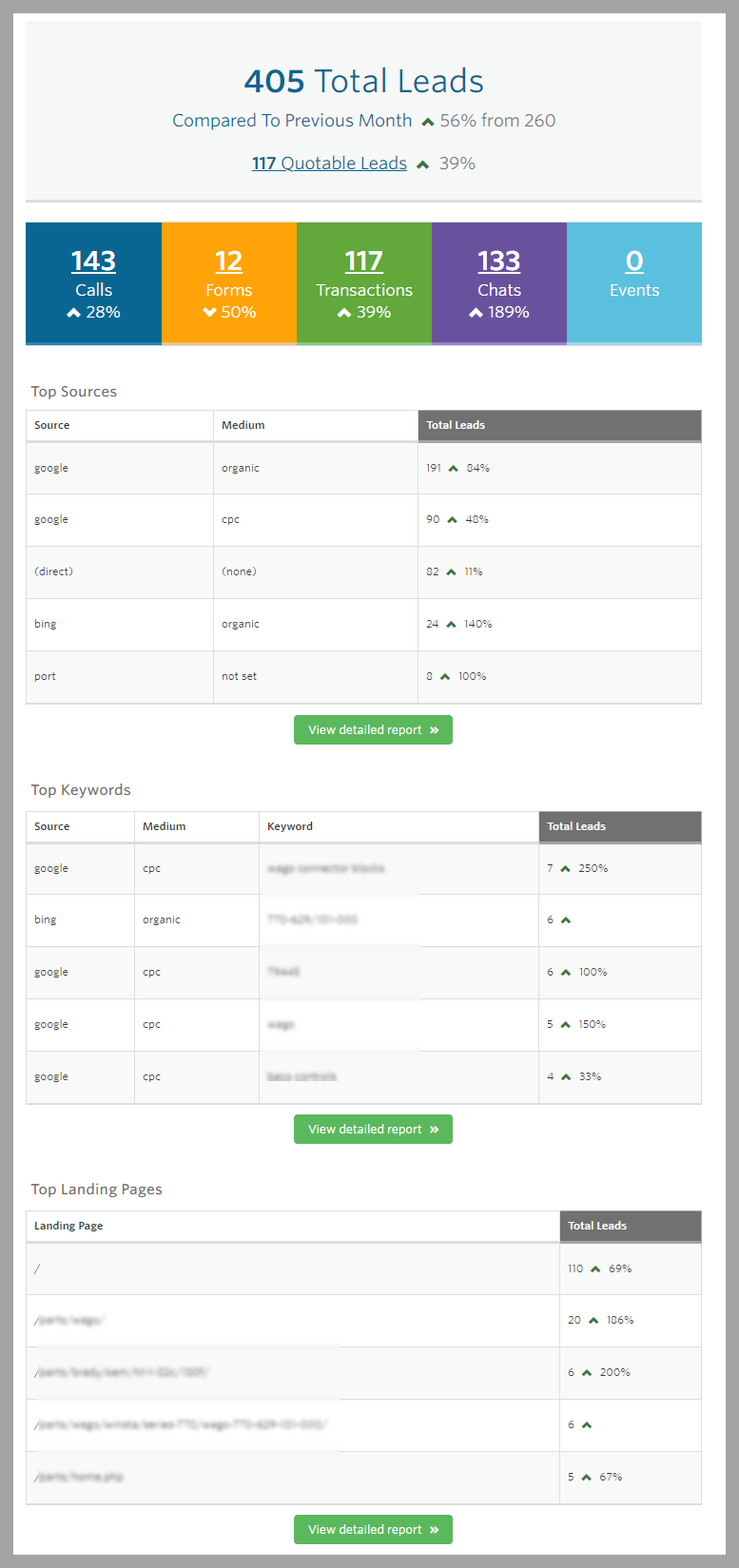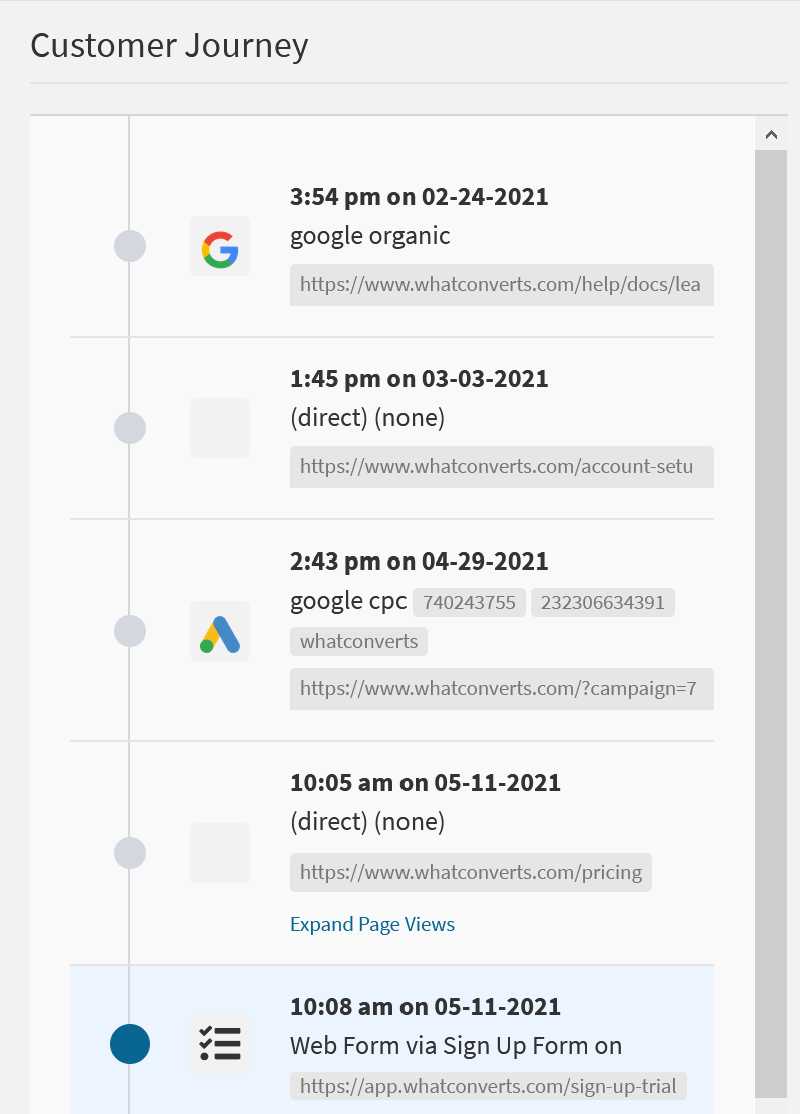Marketing for industrial companies has some unique challenges and opportunities.
With 20-years experience in digital marketing for industrial companies and also co-founding WhatConverts, a lead tracking software that shows what marketing works, Michael Cooney has seen both sides of the digital marketing world.
Michael offers “This will come as no surprise, with all the data I see from thousands of campaigns with the purpose of driving leads or online sales. Google Organic and Google Ads are by far the most effective marketing method.”
You don’t need expensive software to tell you that Google advertising is effective. However, the challenge is that marketing has become extremely competitive and a lot more expensive. Even though Google is extremely effective, competition and increased costs to compete means your Google marketing dollars need to be spent strategically and it may be worth looking at other marketing channels that may not drive the same quantity of leads, but leads of higher quality.
This is when you need software that can show you what leads and sales came from what marketing with details. We call this digital marketing attribution software, which helps you attribute marketing data to your leads. There is also a lot of smoke and mirrors in the marketing world, and just like a manufacturing process, you need a marketing process that can be measured and controlled accurately.
What can lead tracking and marketing attribution software do for you?
In a nutshell:
- Capture all leads, so you don’t miss any.
- Show you what marketing is responsible for each lead.
- Qualify and Value leads, providing a clearer picture of marketing based on quality and value.
- Optimization. With insights from collected data, you can adjust campaigns to improve results.
This is a great start but as you spend more and generate more results, you’re going to want to get deeper insights. This is where your software needs to be able to gather the data needed for analysis, but also provide an easy way to see the analysis, or even do it for you.
Let’s go a little deeper…
Every part of an industrial company has to be streamlined to create profitability. You would never “guess” at production numbers, or logistics. So why guess at the results of your marketing?
Industrial companies do marketing in the form of SEO, PPC advertising, directory site listings, and print advertising. Either this marketing spend is worth it (delivering more revenue than the marketing costs) or it’s not. Marketing attribution helps you find the answers.
Marketing attribution, coupled with great reporting, can provide reports like the one below. This Monthly Summary Report reveals how leads came in, which marketing sources delivered the leads, and how that compares to the previous month. For Google Ads, it also reveals which keywords and campaigns are delivering the best leads.

For industrial companies, marketing can help accomplish a goal like attracting more high-value customers. The question is, how can you measure your marketing to see if it’s helping you accomplish this goal?
In the article below, we’ll explain how industrial companies can use digital marketing attribution software to measure and optimize marketing initiatives just like any other part of the business.
Digital Marketing Attribution Software Helps Identify Your Best Leads
If you’ve noticed that a lot of your leads are low-value, and you’d like to start seeing more high-value leads, you may need to look at your buyer personas. A buyer persona is a profile based on how an individual lead interacts with your website and marketing.
You can use marketing attribution software to build your buyer personas. Good marketing attribution software can reveal the entire customer journey; every touchpoint from stranger to customer. This includes ads clicked on, pages viewed, and conversion actions taken. Below, you’ll see an example of a Customer Journey that shows how a lead interacted with various marketing channels before making contact with a business.

Mapping Out The Customer Journey
Let’s say you want to improve your marketing to attract more high-value leads. First, look at the low-value leads that your current marketing is bringing in. How do they find your company, and what actions do they take on your website once they find you?
Next, answer the same questions for your high-value leads. Which customers spend the most money? Where did these customers come from (marketing source)? Which pages did they visit on your website before converting to a customer?
If you can answer these questions for both low-value and high-value customers, you can build a persona for each type of lead. It might look like this:
Low-Value Lead: Small Business Owner
- Clicks on a Google Ad.
- Leaves your website
- Clicks on another Google Ad the next day
- Fills out a contact form
- Becomes a customer after you reach out.
High-Value Lead: Executive at Large Business
- Finds your business via Organic Search
- Clicks on multiple web pages
- Calls your business
- Finds your business via organic search the next day
- Calls your business again
- Becomes a customer.
You can use these personas to create new marketing initiatives targeted towards the high-value customer persona.
Improving your marketing based on the Customer Journey
In the example above, the low-value customer used Google Ads and filled out a form. The high-value customer used organic search and placed a phone call. After seeing this data, you might focus more on SEO and building out your website content.
You might put phone numbers in your ads since it seems as though High-Value Leads call you over the phone. These personas will help you avoid falling into the same strategies that were only getting you, low-value customers.
Customer Journey tracking can help you build these buyer personas. Without digital marketing attribution software and Customer journey mapping, it’s going to be very difficult to identify how your best leads discover your business. The important thing is you don’t have to just guess at these personas; you can use data to see what real customers and leads are actually doing when interacting with your website and marketing.
Image by Photo Mix from Pixabay







